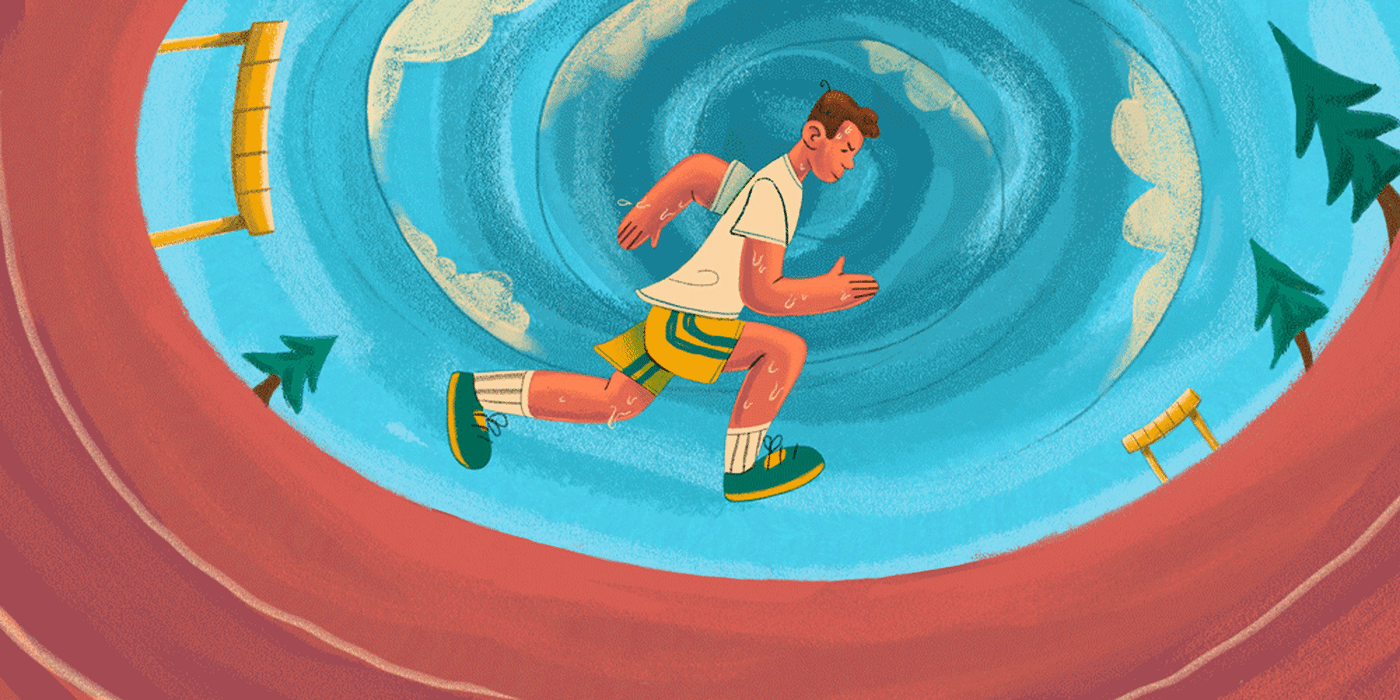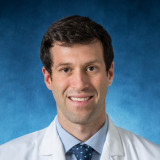There’s nothing quite like the feeling of your heart beating out of control. It’s a strange mix of panic and calm – as if the lack of oxygen to your brain causes those circuits to cross and your body’s not sure whether to run or go to sleep. It’s a calm panic – like watching a building collapse without realizing that you are the building. At least that’s how I remember it when I went into V-tach as a second-year resident during the last workout of my life.
I always considered myself an athlete. By the age of 10, I was swimming two hours most days. By the time I hit high school, I was swimming twice a day. I remember the summer before I got my driver’s license, waking up each morning at 6 a.m., cruising on my bike the 2 miles downhill for practice from 7 a.m. – 9 a.m., and then riding back home so I could rest before our second practice from 3 p.m. – 6 p.m. During the “rest” time between practices I would watch the Tour de France for hours as Lance Armstrong pulled ahead day after day in his maillot jaune. It was a basic existence.
But the allure of pushing my body – suffering in order to get stronger – was addicting. I wasn’t even a particularly impressive swimmer, but I was surrounded by an elite group and a coach who fully bought into the philosophy that more work is always better. The harder you push yourself, the better you’ll be. There wasn’t much strategy to it, just work as hard as you can every day and trust that it will pay off. And as far as I could tell, that’s what Lance Armstrong was doing, and the marathoners, and all the other athletes I admired. So, I did it, day after day, year after year. When my competitive swimming days were over, I immersed myself in triathlons and marathons with a similar masochism I’d embraced while swimming. Medical school and residency were a natural fit – I just channeled that energy and willingness to suffer into studying and taking care of patients. And when I needed to blow off steam, I went running or swimming and pushed myself into that familiar oblivion – happy to let go of everything and let my body suffer. Until that suffering landed me in the ED of the hospital I spent every day of residency in.
The whole episode was a blur. At the end of it all, I was diagnosed with arrhythmogenic cardiomyopathy – a heart muscle disorder, predisposing sufferers to malignant arrhythmias and sudden death, particularly among young endurance athletes. I was given a bottle of beta blockers, an automatic implantable cardioverter-defibrillator (AICD), and the reassurance that if I simply stopped exercising forever I would most likely be fine. The AICD went in on a Friday morning – that Monday I pulled my white coat on over the sore lump in my chest and walked back onto the wards like any other day.
It took years for me to fully process what happened, and in many ways I am still processing. The loss of exercise left a huge void that I am still learning how to fill. But one thing that has changed is my attitude toward endurance sports and its pervasive culture of pushing limits, especially for young athletes.
I grew up loving athletes like Lance Armstrong. And while the doping he and other endurance athletes engaged in was troubling, I still admired their victories. They followed the formula – the harder you work, the more you sacrifice, the better you’ll be. But what are the consequences of this relentless push to challenge your body? Most athletes never have an experience like mine, but as physicians what should we be telling young athletes engaged in this culture of endless boundary pushing? The reality is that according to recent studies, sudden cardiac death (SCD) is the leading cause of death in athletes during exercise and rates are surprisingly high with an incidence of 1:50,000 athlete years among college athletes. If that doesn’t seem like a particularly high incidence, consider that male basketball players were more likely to die from SCD than from a car accident in a recent study. Furthermore, SCD rates exceeded those of suicide deaths (1:103,476) and drug overdose deaths (1:414,173) among college athletes. And beyond the physical risks of high intensity sports, there are psychological consequences of elite competition as well. I’ve written previously about the mental health struggles of Olympic athletes, struggles which likely extend to high school and college athletes. Watching the recent winter Olympics, and seeing a teenager test positive for trimetazidine was a sober reminder of just how far the culture of elite athletics expects young athletes to push their bodies.
Our society currently has a strange relationship with exercise. On the one hand, rates of obesity continue to climb with catastrophic health consequences. And less than a quarter of Americans meet the guidelines for aerobic and muscle strengthening exercise. On the other hand, rates of marathon participation have increased by nearly 50% since 2008. We live increasingly in a culture of extremes where it seems most people either exercise too little or too much (marathon deaths are difficult to study but evidence suggests that SCD is also elevated in marathoners).
So, what should the role of a physician be in counseling a patient about exercise? I loved my years of swimming and still think fondly of the marathons and triathlons I competed in. But during those years where I pushed my body to extremes, I had no idea there could be negative consequences to my health. In fact, I thought the opposite – I assumed I was setting myself up for a lifetime of fitness and well-being. Today, I still miss those early morning runs, but the yoga routine I’ve settled into and the long walks with my dog are nice. And my heart is doing well – having stopped intense exercise, things have stabilized and there’s no indication that I’ll ever find myself back in V-tach in the ED again. As a (soon-to-be) geriatric psychiatrist, I happily counsel my patients daily about the physical and cognitive benefits of light aerobic exercise. But I worry about the messages our young athletes continue to get and hope that my journey is not needlessly repeated by others. Perhaps as physicians we should be encouraging more yoga and less marathons – fewer adventure races and more nature walks.
How do you counsel patients on an appropriate amount of physical activity? Share your communication exercises in the comments.
Chris Morrow is a geriatric psychiatry fellow at the Johns Hopkins School of Medicine. He completed his general psychiatry residency training at Johns Hopkins and served as a chief resident during his final year. His clinical and research interests include the psychiatric care of patients with neurodegenerative disease, psychiatric care in patients with complex medical illness, psycho-oncology, and collaborative care. He is a 2021–2022 Doximity Op-Med Fellow.
Animation by Diana Connolly







